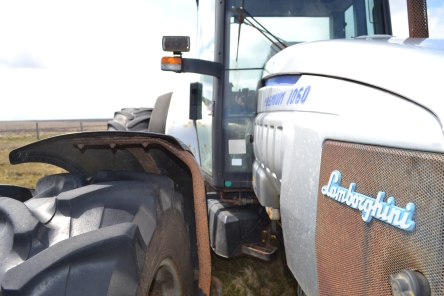Peat was traditionally the fuel that kept island homes warm throughout the long, cold winters. Families, neighbours and, sometimes, whole villages, would go out to the moor together and cut their peats, using their taraisgeirs tar-ash-kerr (the much more interesting sounding Gaelic for peat iron) to cut each 12-inch square piece of peat by hand. Things changed a lot in the early 90s, when lots of homes installed oil heating systems. With heating oil costs having trebled (now around 60-65 pence per litre), many homes are going back to peats.
Our family have always had fire of some type, but for the last 5 years or so, we’ve switched to machine cut peats, rather than hand cut. My father used to be a fisherman but an accident on his boat in 2005, and also lack of time for many of us, mean that it is the preferred choice for us.
Anyway, the reason for this post is that our peats were cut over the last 24 hours. A man in Ness spends many of his evenings at this time of year out on the moor with his tractor, harvesting our winter fuel.
Of course, it’s a Lamborghini that we use for our peats in Ness……
The peat-cutting machine is mounted on the back of the tractor. This picture was taken at the fank in North Dell, with the village in the background
The chain/blade is angled downwards into the earth and works a bit like a chainsaw/conveyor belt. The blade cuts into the ground and carries the peat up into the rest of the machine.
The peat is the forced out of the other end of the machine, into long sausages – hence why we call them sausage peats!
 The peats will be left to dry for a few weeks, and I will blog again on the next stage, once we reach it.
The peats will be left to dry for a few weeks, and I will blog again on the next stage, once we reach it.




Check out my face book photos to see how you turf peats in the 21st century.
Pingback: A look back at 2012 « Air an Lot